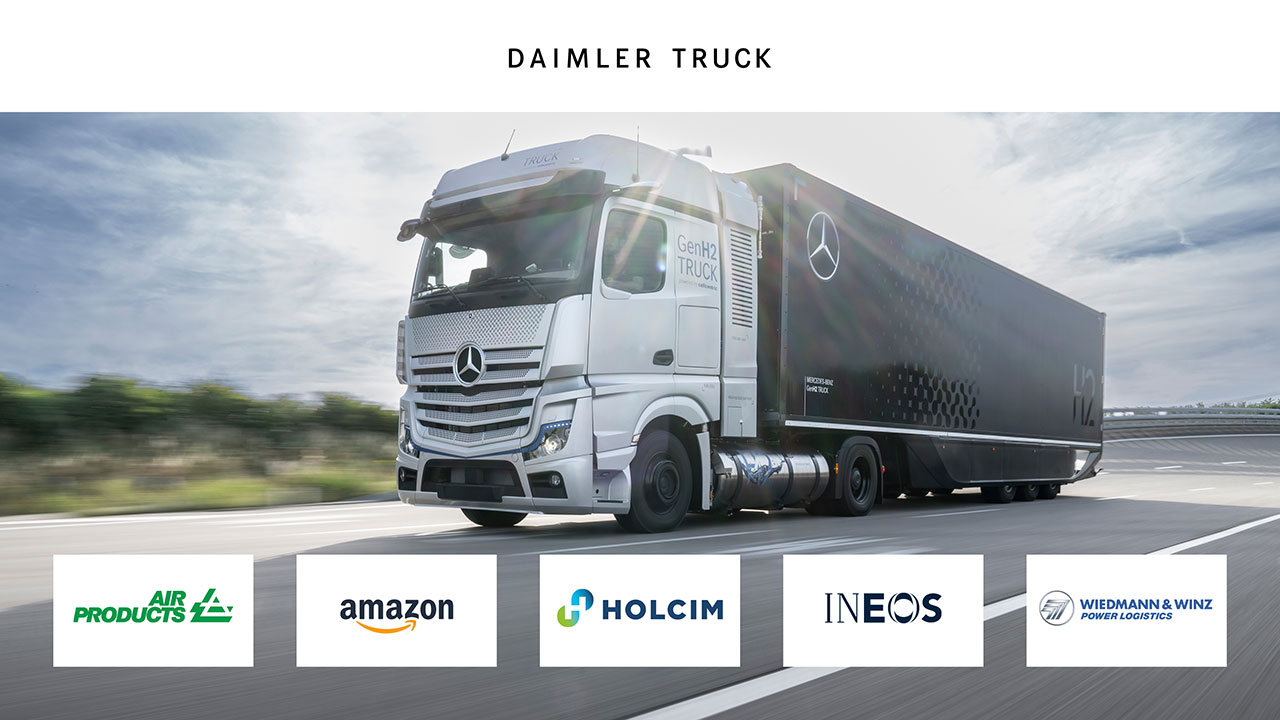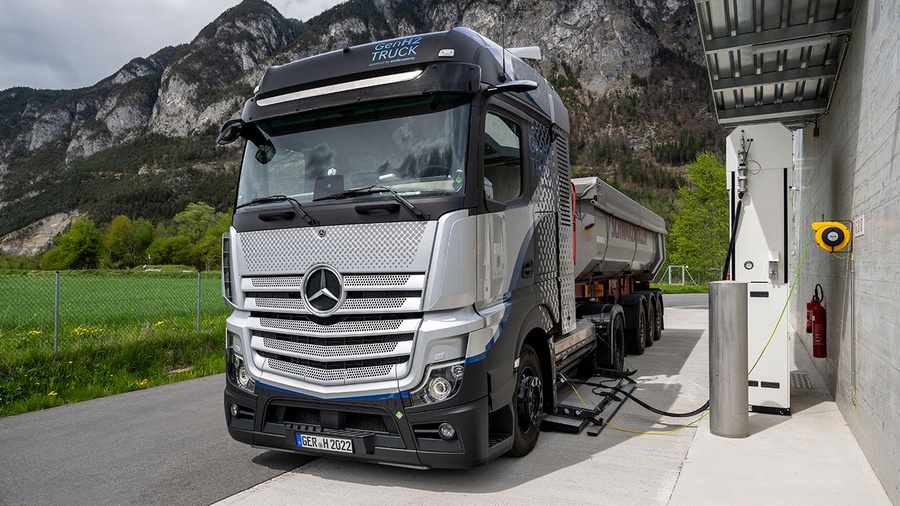Daimler Trucks is building an initial customer test fleet of Mercedes-Benz GenH2 trucks. Starting in mid-2024, Amazon, Air Products, INEOS, Holcim, and Wiedmann & Winz will participate in the first customer trials to gain initial experience in CO2-free long-distance transportation with fuel cell trucks.
The five semi-trailer tractors will be deployed in different long-haul applications on specific routes in Germany, such as the transport of building materials, sea containers or cylinder gases. During these first customer trials the GenH2 Trucks remain under the direct supervision and responsibility of Mercedes-Benz Trucks. The vehicles will be refueled at designated public liquid hydrogen filling stations (sLH2) in Wörth am Rhein and in the Duisburg area.
Daimler Truck and its partner companies are thus creating a lighthouse project and demonstrating that decarbonized transport with hydrogen-powered trucks is already possible today. However, for the transformation to succeed, it will be necessary in the coming years to ensure the build-up of an international refueling infrastructure and a sufficient supply of green liquid hydrogen.
Andreas Gorbach, Member of the Board of Management of Daimler Truck AG, responsible for Truck Technology: “With this first customer fleet, our fuel-cell trucks are now being tested in real customer operation. A win-win situation for both sides: our customers get to know fuel-cell technology in daily real-life operation and our engineering team gets to better understand customer needs and relevant use cases, taking them into account for series development.”
Wiedmann & Winz based in Geislingen an der Steige (Baden-Württemberg) will be one of the first companies to trial the Mercedes-Benz GenH2 Truck. For the international logistics service provider DP World, the hydrogen-powered vehicle will transport sea containers to and from industrial and commercial customers.
Logistics company Gerdes + Landwehr, part of the Holcim Group, intends to transport granulates and minerals for the building materials industry. Air Products will use Daimler hydrogen trucks to transport cylinder gases. INEOS and VERVAEKE intend to use the Mercedes-Benz GenH2 Truck to transport Dry Bulk PVC.
Daimler Truck prefers liquid hydrogen in the development of hydrogen-based drives. In this aggregate state the energy carrier not only has a significantly higher energy density, but transport costs can also be significantly reduced. As a result, more hydrogen can be carried, which significantly increases the range and enables comparable performance of the vehicle with that of a conventional diesel truck. Liquid hydrogen tanks also offer advantages in terms of cost and weight. Therefore, the use of liquid hydrogen enables a higher payload.
he Mercedes-Benz GenH2 Trucks, which are used in these first customer trials offer a payload of approx. 25 tons at a gross combination weight (GCW) of 40 tons. Two special liquid hydrogen tanks and a particularly powerful cellcentric fuel-cell system enable this high payload and long range. They represent the centerpiece of the GenH2 Truck. The two stainless-steel liquid-hydrogen tanks of the GenH2 Truck have a particularly high storage capacity of 88 kilograms (44 kg each) which make them well suited for covering long distances. The stainless-steel tank system consists of two tubes, one within the other, that are connected to each other, and vacuum insulated.
The fuel-cell system of the GenH2 Truck delivers 300 kilowatts (2 x150 kW) and the battery provides an additional 400 kW temporarily. At 70 kWh, the storage capacity of the battery is relatively low, as it is not intended to meet energy needs, but mainly to be switched on to provide situational power support for the fuel cell, for example during peak loads while accelerating or while driving uphill fully loaded. At the same time, the relatively light battery allows a higher payload. It is recharged with braking energy and excess fuel-cell energy. A core element of the sophisticated operating strategy of the fuel-cell and battery system is a cooling and heating system that keeps all components at a suitable operating temperature, thus ensuring maximum durability. In a pre-series version, the two electric motors are designed for a total of 2 x 230 kW continuous power and 2 x 330 kW maximum power.
Source: Daimler Truck


